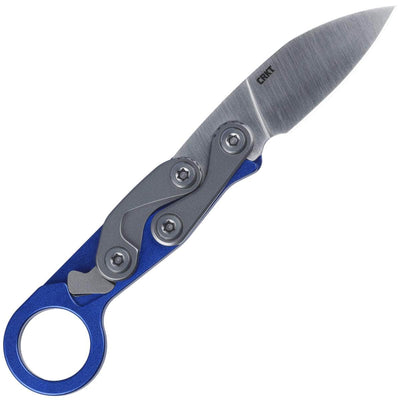Your cart is empty.
Pocket Knife Lock Types
Pocket knives rely on a variety of mechanisms to open and close. Here are explanations of some of the most common pocket knife locks, such as liner locks, frame locks and ring locks.
Liner lock (or locking liner)
The liner lock is easily the most popular knife lock found in folding knives. It was invented in the early 80s by knife-maker Michael Walker and was quickly adopted by a number of mainstream knife makers.
The liner lock functions with one section of the liner angled inward toward the inside of the knife. From this position, the liner is only able to go back to its old position with manual force, therefore locking it in place.
The tail of the liner lock, which is closest to the blade, is cut to engage the bottom of the blade under the pivot. If the user wants to disengage the lock, they must manually move the liner to the side, away from the blade bottom.
The liner lock was a great advancement in knife lock technology and assisted in the evolution of the tactical knife and one-handed knife.
Frame lock
The main difference between a liner lock and a frame lock is that a frame lock uses the handle to form the frame and therefore the lock. The handle, which has two sides, is often cut from a steel that is much thicker than the liner of most locks.
Just like the liner lock, the frame lock is situated with the liner inward and the tip engaging the bottom of the blade. The frame lock is released by applying pressure to the frame to move it away from the blade. When it is opened, the pressure on the lock forces it to snap across the blade, engaging at its furthest point.
Frame locks are known for their strength and thickness, but it is only with correct construction that they operate at full capacity. If the angle of the blade bottom is not matched correctly with the lock, the lock may not travel the correct distance, damaging its effectiveness.
Back lock (or lock back)
The back lock functions with a locking arm, which sits along the handle spine and is molded with a hook that fits into a notch on the back of the blade, behind the pivot. This hook is dragged by tension from the back spring into the notch, therefore locking the knife with a snap. Because it is reliable and economical to construct, the back lock is one of the most common locks used in a folding knife, such as the Buck 110.
Mid lock
The mid lock is similar to a back lock, except the release mechanism is in the middle of the handle spine as opposed to near the butt end of the knife. This shortens the locking arm, producing more tension and lock strength.
Mid locks are famous because of their ability to withstand large amounts of pressure. In demonstrations by the knife company Cold Steel, mid lock knives have maintained their integrity under hundreds of pounds of pressure, impressing many knife owners with their stupefying feats of strength. This publicity has undoubtedly increased the frequency at which mid lock knives are purchased.
Ring Lock/Twist Lock
A ring lock is closed when the user turns a metal ring wrapped around the pivot of the knife to a position where a break in the ring allows the blade to be opened. After the blade has been opened, the ring must be turned again, so that the space through which the blade was opened is blocked. This keeps the lock static in the open position.
The ring lock, which is also called the twist lock, first gained popularity in the 1950s, when the knife company Opinel Knives added it to their line. Most of the success of the ring lock can be attributed to its durability, easy use and low cost.
Lever lock
A lever lock is locked by a post or pin in or near the pivot bolster, which can be inserted into a hole drilled in the base of the blade. With the pin through the blade hole, the blade is locked, either in the open or closed position. The lever lock is often used on automatic knives and is related to the plunge lock. It is also the lock that operates most switch blade knives, allowing the knife to pop out in dramatic fashion.
A slight variation on the lever lock is a locking system in which the blade is constructed with a post on its spine near the pivot. The back spring has a round top piece that has a hole drilled in it to match the post. When the blade opens, the post hits the hole in the back spring and a firm lockup occurs.



















